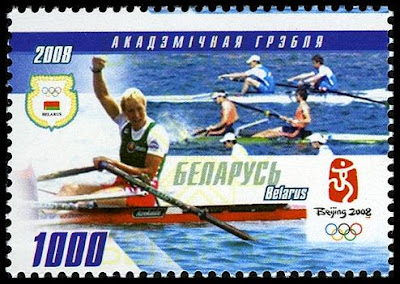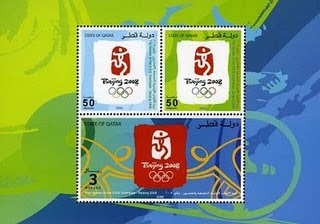Wednesday, October 12, 2011
Monday, October 10, 2011
Sunday, October 9, 2011
Slovakia Stamp: 2010 Winter Olympic Games Vancouver
Tehnical details: Issue number: 468
Date of Issue: 15. 01. 2010
Face value: 1 €
Dimensions: 40,4 x 27,2 mm
Layout/Format: TL
Stamps per TL: 50
Number in set: 1
Stamp designer: Peter Uchnár
Printer: Poštovní tiskárna cenin Praha, a. s.
Print technology: Offset
FDC designer: Peter Uchnár
FDC engraver: Arnold Feke
Cancellation design: Peter Uchnár
FDC Printer: TAB, s. r. o., Bratislava
FDC Print technology: WAITE
Date of Issue: 15. 01. 2010
Face value: 1 €
Dimensions: 40,4 x 27,2 mm
Layout/Format: TL
Stamps per TL: 50
Number in set: 1
Stamp designer: Peter Uchnár
Printer: Poštovní tiskárna cenin Praha, a. s.
Print technology: Offset
FDC designer: Peter Uchnár
FDC engraver: Arnold Feke
Cancellation design: Peter Uchnár
FDC Printer: TAB, s. r. o., Bratislava
FDC Print technology: WAITE
Labels:
2. 2010-Vancouver (Winter),
Slovakia
Friday, October 7, 2011
Liechtenstien Stamps: Winter Olympic Games Vancouver 2010
By longstanding tradition Liechtenstein issues special series of stamps for each Winter and Summer Olympic Games. What started in 1964 with the first official Liechtenstein Olympic stamp, on which the flags of the two host countries Austria (Innsbruck – Winter) and Japan (Tokyo – Summer) were jointly featured, has been regularly continued since the 1972 Summer Olympics in Munich and will be continued this year too to mark the XXI Winter Games in Vancouver (Canada). As for last year’s Olympic stamp (Peking 2008), for this series too an artist from the country hosting the Games has been sought and found. Mark Heine is the Canadian artist entrusted with the task of supplying the artwork for this series and has created two large-format dynamic oil paintings, the first showing a downhill racer in the Alpine Skiing programme (face value CHF 1.00) and the second a cross-country skier in the Nordic Skiing programme (face value CHF 1.80). The sportsmen are shown in the new kit, which when the stamps were printed was still completely unknown to the general public. These outfits are intended to enable Liechtenstein’s winter athletes to continue the great successes of earlier years and perhaps help to bring about another sporting triumph. The time is surely ripe.
Labels:
2. 2010-Vancouver (Winter),
Liechtenstein
Wednesday, October 5, 2011
Happy Dasara (Happy Dassehra & Vijayadashmi)
Dussehra is a popular festival celebrated by Hindus all over India, albeit with different names. It is also known as Vijayadashmi ('Vijay' meaning 'victory' and 'Dashmi meaning 'tenth day), as it is believed that it was on this day that Lord Rama killed the demon-king, Ravana and rescued his abducted wife - Sita. In other words, it signifies the triumph of good over evil. The legendary triumph is reenacted to the day. In the northern parts of India, huge effigies of Ravana, his giant brother Kumbhkarna and son Meghnath are placed in vast open grounds. Fireworks and crackers are placed inside the effigies.
Actors dressed as Rama, his wife Sita and brother Lakshmana enact the final moments of the battle, at the Ramlila ground. After the enactment of the climax of the war with Ravana, the character playing Rama shoots an arrow with a flaming tip at the effigies from a safe distance and the crowd bursts up in cheer, as the crackers catch fire. The enthusiasm and the cheers sometimes even drown the deafening blast. Merriment ensues, as people indulge themselves games, dance and music that are held at the fair.Bengalis celebrate Dusshera as a part of their main festival - Durga Puja. This day marks the end of Durga Pooja celebrations, the preceding nine days being collectively referred to as 'Navratri'. Vijayadashmi is dedicated to Mother Goddess Shakti, who incarnated in the form of Goddess Durga, a combined manifestation of the divine energies of the Holy Trinity - Brahma, Vishnu and Mahesh and all the other devatas, when they summoned her to kill the mighty demon known as Mahishasura and freed the world from his terror.
On Vijayadashmi, the idols of Goddess Durga are immersed into water, after the nine days of festivities. It is said that the people of the earth in the eastern state of West Bengal adopted Durga as their daughter and thus, she visits the home of her parents every year, during the last four days of Navratri, along with her sons Ganesha and Kartikeya, and daughters Lakshmi and Saraswati. She finally leaves for her husband's place on Vijayadashmi. Similar customs are seen in Orissa and Assam. In the North-eastern state of Tripura, huge fairs are conducted and effigies of Ravana, Meghnath and Kumbhkarna are burnts at Ramlila maidans.
In the southern states of Tamil Nadu and Kerala, Vijayadashmi holds special significance. The day is considered auspicious for starting education or any form of art, such as dance and music. Saraswati Puja is conducted on the day, when the formal commencement of education of small kids takes place. It is called 'Vidya aarambham' (the beginning of Vidya, meaning education). In Karnataka (especially Mysore) and Andhra Pradesh, Dusshera is celebrated with fanfare. Huge processions can be witnessed in both the States. Although Dussehra is celebrated in different ways across India, the motive remains the same - to spread good cheer and celebrate the victory of good over the evil.
Sunday, October 2, 2011
Wednesday, September 28, 2011
Happy Navratri
What is Navratri?
'Nav' means 'nine' and 'ratri' means 'night'. Thus, 'Navratri' means 'nine nights'. There are many legends attached to the conception of Navratri like all Indian festivals. All of them are related to Goddess Shakti (Hindu Mother Goddess) and her various forms. It is one of the most celebrated festivals of Hindu calendar, it holds special significance for Gujratis and Bengalis and one can see it in the zeal and fervor of the people with which they indulge in the festive activities of the season. Dandiya and Garba Rass are the highlights of the festival in Gujarat, while farmer sow seeds and thank the Goddess for her blessings and pray for better yield. In older times, Navratri was associated with the fertility of Mother Earth who feed us as her children.
The first three days of Navratri are dedicated to Goddess Durga (Warrior Goddess) dressed in red and mounted on a lion. Her various incarnations - Kumari, Parvati and Kali - are worshipped during these days. They represent the three different classes of womanhood that include the child, the young girl and the mature woman. Next three days are dedicated to Goddess Lakshmi (Goddess of Wealth and Prosperity), dressed in gold and mounted on an owl and finally, last three are dedicated to Goddess Saraswati (Goddess Of Knowledge), dressed in milky white and mounted on a pure white swan. Sweetmeats are prepared for the celebrations. Children and adults dress up in new bright-colored dresses for the night performances.
In some communities, people undergo rigorous fasts during this season that lasts for the nine days of Navratri. The festival culminates on Mahanavami. On this day, Kanya Puja is performed. Nine young girls representing the nine forms of Goddess Durga are worshiped. Their feet are washed as a mark of respect for the Goddess and then they are offered new clothes as gifts by the worshiper. This ritual is performed in most parts of the country. With commercialization, the festival has moved on to be a social festival rather than merely a religious one. However, nothing dampens the spirit of the devout followers of Goddess Durga, as they sing devotional songs and indulge in the celebrations of Navratri, year by year..
For more information please visit to :http://en.wikipedia.org/wiki/Navratri
Sunday, September 25, 2011
Thursday, September 22, 2011
Tuesday, September 20, 2011
Monday, September 19, 2011
Sunday, September 18, 2011
Saturday, September 17, 2011
Friday, September 16, 2011
Subscribe to:
Posts (Atom)



























